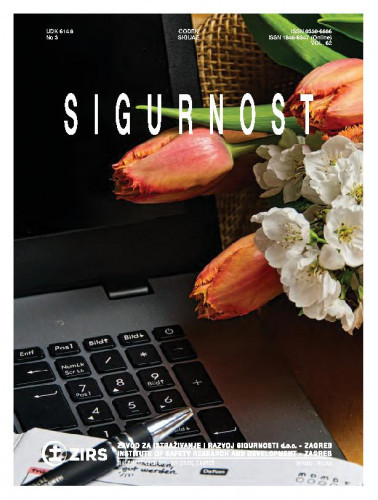Zbog različitih bolesti i ozljeda šake, potrebno je provesti rehabilitaciju s ciljem postizanja pokretljivosti, koordinacije i povratka funkcije šake. Pri rehabilitaciji pacijenata s parezom šake, koja je posljedica moždanog udara, postupak najčešće obuhvaća fleksijsko i ekstenzijsko gibanje prstiju šake, a terapiju je moguće provoditi pomoću rehabilitacijskih uređaja. Kod fleksije i ekstenzije prstiju šake javljaju se momenti u zglobovima koji predstavljaju pokazatelje aktivnosti pojedinih mišića. Poznavanje potrebnih momenata i sila bitno je za konstruiranje rehabilitacijskog uređaja. Prilikom konstruiranja rehabilitacijskih uređaja moguće je u ranoj fazi, pomoću računalnog modela, analizirati karakteristike uređaja i učinkovitost međudjelovanja uređaja i dijela tijela za koji treba provesti rehabilitaciju. Cilj istraživanja bio je razviti biomehanički model ljudske šake koji opisuje fleksijsko i ekstenzijsko gibanje i ponašanje šake kod međudjelovanja s rehabilitacijskim uređajem te omogućuje analizu karakteristika uređaja za rehabilitaciju u ranoj fazi konstruiranja. Potrebni kinematički podaci utvrđeni su mjerenjem u biomehaničkom laboratoriju. Pomoću razvijenog matematičkog modela moguće je odrediti sile i momente u zglobovima, a time i procijeniti aktivnosti pojedinih mišića. Ovo, na temelju željene mišićne aktivnosti, omogućuje određivanje parametra potrebnog opterećenja koje treba osigurati uređaj u ranoj fazi konstruiranja rehabilitacijskog uređaja.; Due to various diseases and injuries of the hand, rehabilitation is necessary in order to achieve mobility, coordination, and restoration of the function of the hand. Rehabilitation of patients with finger paresis, which is the result of a stroke, is a procedure that most often involves flexion and extension of the fingers of the hand, while the therapy can be performed using rehabilitation devices. During flexion and extension of the fingers, moments that occur in the joints are indicators of the activity of individual muscles. Knowing the necessary moments and forces is essential for developing a rehabilitation device. When designing rehabilitation devices, it is possible to analyse, at an early stage and using a computer model, the device characteristics, and efficiency of interaction of the device and the body part that is in need of rehabilitation. The aim of this research was to develop a biomechanical model of a human hand that describes flexural and extensional motion and behaviour of the hand when interacting with a rehabilitation device and enables the analysis of the device's characteristics at an early stage of development. The required kinematic data were determined by measurement in a biomechanical laboratory. By using the developed mathematical model, it is possible to determine the forces and moments in the joints, thus evaluating the activities of individual muscles. Based on the desired muscle activity, this allows an assessment of the parameter of the required load that needs to be provided by the device at an early stage in the design of the rehabilitation device.
Sažetak

 Sigurnost : časopis za sigurnost u radnoj i životnoj okolini = Safety : journal for the safety in the work organisation and living environment : 62, 3(2020) / glavni urednik, editor in chief Željko Sven Bukovski.
Sigurnost : časopis za sigurnost u radnoj i životnoj okolini = Safety : journal for the safety in the work organisation and living environment : 62, 3(2020) / glavni urednik, editor in chief Željko Sven Bukovski.